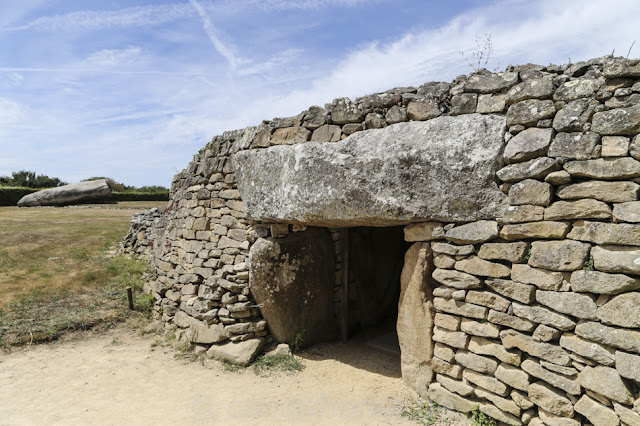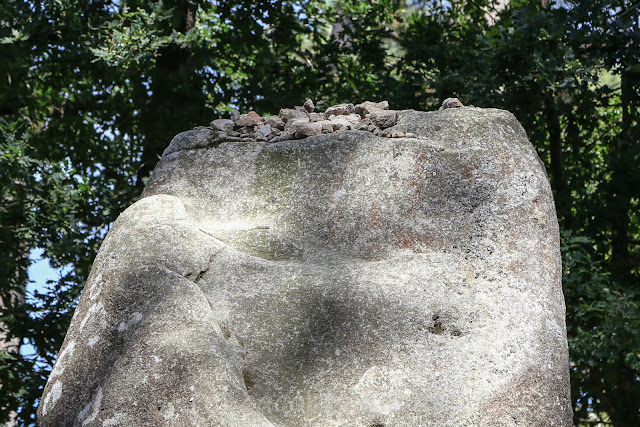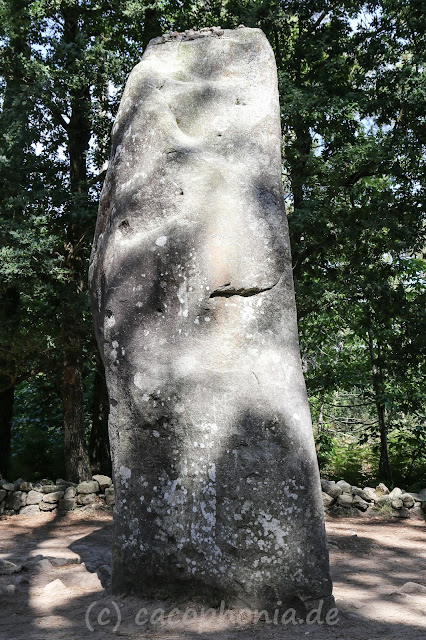 |
| Table des Marchand and Grand Menhir with Locmariaquer in the background |
Official Website: http://www.site-megalithique-locmariaquer.fr/en/
Geographical coordinates: 47° 34´ N, 2° 57´W
Tumulus and Dolmen d'Er Grah
The Tumulus and Dolmen d'Er Grah (aka Er Vinglé) is one of a few closed single graves of the megalithic age. The Dolmen was built appr. 4200 BC. Its endstone is to be seen on the top of the Tumulus.
The Tumulus has a length of 140m and the width varies from 16m to 26m. It must been one of the hugest in Brittany. The stones are from local granite and orthogneiss was used for the endstone.
Table des Marchand
This sight (aka An Daol Varchant) was built appr. 3900 BC. although the flag stone is older than the Dolmen. This stone with height of 3,20m has engravings on both sides. There are shown 49 crooks.The capstone has engravings of a plough and the forelegs, breast and parts of the head of a cattle. Its horns seem to be engraved in another part of the capstone in Gavrini. This stone in Locmariaquer is the lowest part of a menhir which middle part belongs to the Dolmen de Gavrini and the upper part is maybe the capstone of the Dolmen d'Er Grah.
During an extensive reconstruction the Tumulus and the double-stage cairn were rebuilt.
 |
| Endstone with engraving of 49 crooks |
 |
| Capstone with the engravings of a plough and parts of a cattle |
Grand Menhir brisé
Beside the Table des Marchand four fragments of the Grand Menhir are situated and very well known as the world's biggest menhir. It is more than 20m long with a weight of 280 tons. It consists of orthogneiss which is not to be found on the peninsula of Locmariaquer.Behind the Grand Menhir another 18 smaller menhirs had been standing in former times. This alignment was built around 4500 BC and was destroyed between 4300 and 4200 BC. There is no hint on reason or initiator.

















































